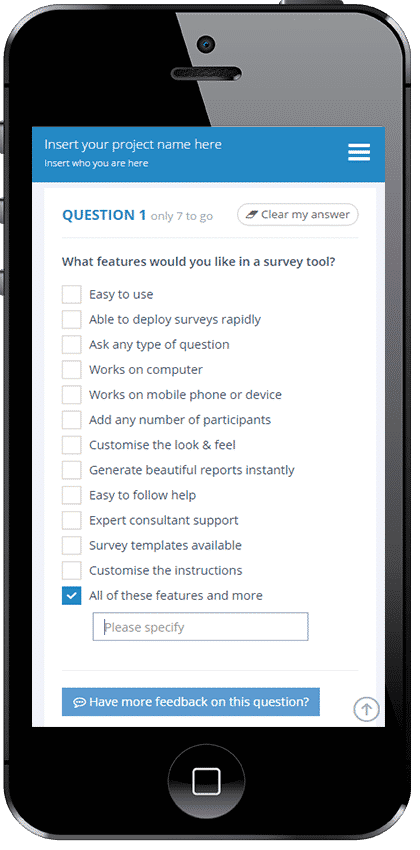
How to use multiple choice survey questions
Ah – the multiple choice survey question. If you’ve taken any kind of survey you’ve mostly likely answered a multiple choice survey question presented in one of several different ways.
Why is the multiple choice survey question so popular? It’s because they:
- are easy to understand
- are adaptable to different situations
- are good at returning structured responses
- make survey completion easier.
But there are also a couple of things you need to know about using multiple choice questions.
First, you inherently have to limit the answers. In the process of narrowing down the options for answers you could reflect personal bias. Bias in the available answers means bias in the results. So, be careful.
Second, there are several types of multiple choice questions. Knowing when to use a particular type is important.
Let’s take a look at the different types and see where they are best used.
Multiple answers or just one?
Most multiple choice questions allow a single answer only. This works well for a number of question types:
- Yes or No
- Agree or Disagree
- Pick your favorite option from a list
- Pick your least favorite option from a list
Multiple choice questions may have different variations
Multiple Choice, Multiple Answer questions offer a range of different types of approaches to gathering data – many responses, a range of responses, a maximum number of responses, a fixed number of responses, a minimum number of responses, etc.
For example, rather than forcing respondents to choose a single favourite pizza topping, a multiple choice question could ask “Which pizza toppings do you like?” and allow respondents to choose all the topping options they like.
Or, possibly a question might allow a range of responses. For example, Please select the 5 most important strategies for us to work on. Or, Please select between 3 and 5 of the most important strategies for us to work on.
Include an ‘Other’ option
One drawback of having a list of multiple answers is that you can introduce bias into your results. What if the respondent wants to indicate a choice you haven’t provided?
Consider adding an answer option of ‘other’ with a “please specify” (or a comment field) at the bottom of the list of answers. This can allow a respondent to enter a custom response. This can help avoid bias, but it reduces your analytical flexibility, and means your analysis will take longer.
Rating scales
If your question displays a range of numbers and asks respondents to select one number, you’re using a rating scale.
To use a scale well, make sure the relationship between the numbers on the scale, and the concepts you are asking about, are clear in the phrasing of the question.
Many websites have a small survey that asks, How likely are you to recommend us to someone?. This is called the Net Promoter Score and is a common use of a rating scale question.
Drop down questions
If your question has a long list of brief answer choices (home town or birth year, etc), consider using a dropdown field.
Use these sparingly, though. It’s harder to answer questions when all the options aren’t visible at once.
Multiple choice survey questions in summary!
Multiple choice questions are commonly used in surveys. After reading through all the above, you can see why.
Multiple choice questions:
- are simple – easy to answer on all types of screen sizes (desktop, tablet, mobile)
- are precise – many times you want only one of two or three answers from respondents
- provide direction – by how you format your answers you can guide respondents to answer in ways that support your survey’s goals
- provide easy-to-analyse data – you can run analytics on results from multiple choice questions that you can’t run on results from open-ended questions.




